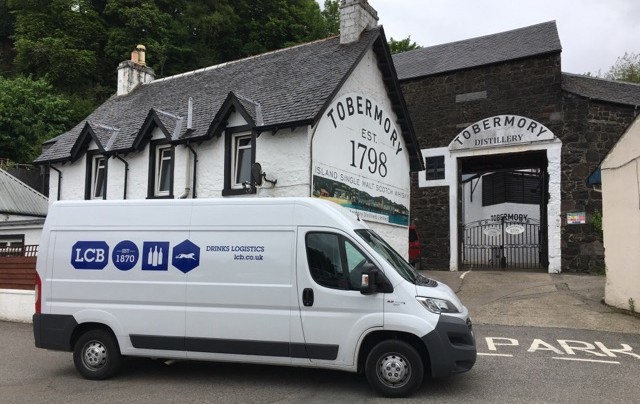London is ‘rip off capital of the wine world’
Spectator food and wine writer Bruce Palling has written an article condemning the exorbitant pricing of many London wine lists, naming and shaming some of the worst culprits.
Describing London as the “rip off capital of the wine world”, Palling said that although the city was a wine ‘Mecca’ boasting wine offerings from “every imaginable part of the world”, margins were too often excessive, with the consequence that “even half-decent wines are unaffordable to most diners”.
Palling’s comments came soon after Observer critic Jay Rayner decried “shameless mark-ups” on restaurant wine lists. During a dinner at the Cheltenham Literary Festival in October, Rayner, warned that “people are very much more sensitive to stupid mark-ups”, adding: “I’ve seen mark-ups of four or five [times the retail price] and that’s shameless. Two or three is understandable but four or five is outrageous.”
Typically in the London on-trade, wines are priced at three times the retail price plus VAT – a margin of 70% – however mark-ups of 400% or more are not unknown.
More news…
Top 10 London wine lists by price
Growing trend for seasonal wine lists
Palling used his Spectator column, The Wine List, to rail against the trend for such “extortionate” mark-ups, singling out Nobu, the Fat Duck (in Berkshire) and Jason Atherton’s Social Wine and Tapas for criticism.
While he acknowledged that some of the most hard-to-justify mark-ups are on three or four-figure bottles – eg, an unnamed Super Tuscan which retails for around £150 and is sold at Heston Blumenthal’s Fat Duck for more than £800 – he went on to complain that such mark-ups are also seen among wines in the ‘sweet spot’ of £50-£60 per bottle. “I don’t mind spending £50 or £60 for a bottle that might retail for £30 or £40,” he said, “but the way things stand all you are getting is something costing less than £15.”
Palling did however single out exceptions to the high mark-up rule in the shape of Andrew Edmunds and 10 Greek Street in Soho, The Ledbury in Notting Hill and Bonhams in Mayfair – the latter, for example, offering mature cru classé claret at near-retail prices.
Partner Content
A margin call
A feature in the November issue of the Drinks Business addressed the largely unanswered question of what margins from wine sales are used for and how diners can get the best value out of their wine purchases when eating out.
The feature found that venues such as Le 110 de Taillevent and Roger Jones’ The Harrow at Little Bedwyn, Wiltshire, were among those offering more generous margins to customers. They were able to do this by buying wines well in advance of when they intended to list them.
Jones told db: “Buy weekly and get a bad deal or in advance and arrange a good deal. Cloudy Bay third-party is already twice as expensive as direct from LVMH. That way it ranges from £28 to £70 – it’s not that the restaurant is always charging more but they bought it badly and that’s what gives a restaurant a bad name.”
The chef added that in an age when people can easily look up the price of wines on their smartphones, restaurants failing to set an appropriate margin on a wine were more likely to get caught out.
Such a threat is of no deterrence to some high-profile restaurants in London, according to Palling, however. He picked out restaurants run by the likes of Heston Blumenthal, Marcus Wareing and Jason Atherton as all “playing the game” of using their location and sense of prestige to justify extortionate mark-ups.
Palling’s solution, which will be unwelcome to most restaurants, was to “find out if your favourite restaurant offers corkage or do what wine lovers have always done – buy whatever you can afford from a good wine merchant and drink it at home with friends”.
To find out the top 10 London restaurants for price on Wine List Confidential, click here.





Has the author considered the prices these establishments pay for rent and rates? Understanding that if you are not “bricks and mortar” owners your prices need to be reflected in your profits and loss and bank balance. The most common matrix used is your rent should be 8-10% of your profits. When you are paying hundreds of thousands (if not millions) for rent, rates and the “premiums” to acquire venues in Mayfair, Soho (and now increasingly Shoreditch) you soon understand what it’s like to be a responsible business owner and not just a wine& food critic with a quid-pro-quo opinion on how we factor our prices to keep from going out of business in London.
It’s an impossible situation for all concerned. If the wines are priced too high they will probably sell less, if they are priced sensibly then the restaurant may not make enough money to pay the rent as you correctly pointed out. I think many establishments should try a cellar rotation system but not many merchants are willing to do this service anymore
Or more places should just offer corkage too… just take the margin made on a house/entry red or white and charge that to customers bringing their own bottle (likely to be four times the cost they paid their supplier). Far more likely the diner will opt for more expensive mains or even be tempted to look at the desert menu if they feel that have “saved” a bit on the wine. There are a few top places that will allow corkage and even 20 pounds a bottle isn’t too bad if you are bringing something decent along. Brinkleys in Chelsea also are a good example of fair wine prices..